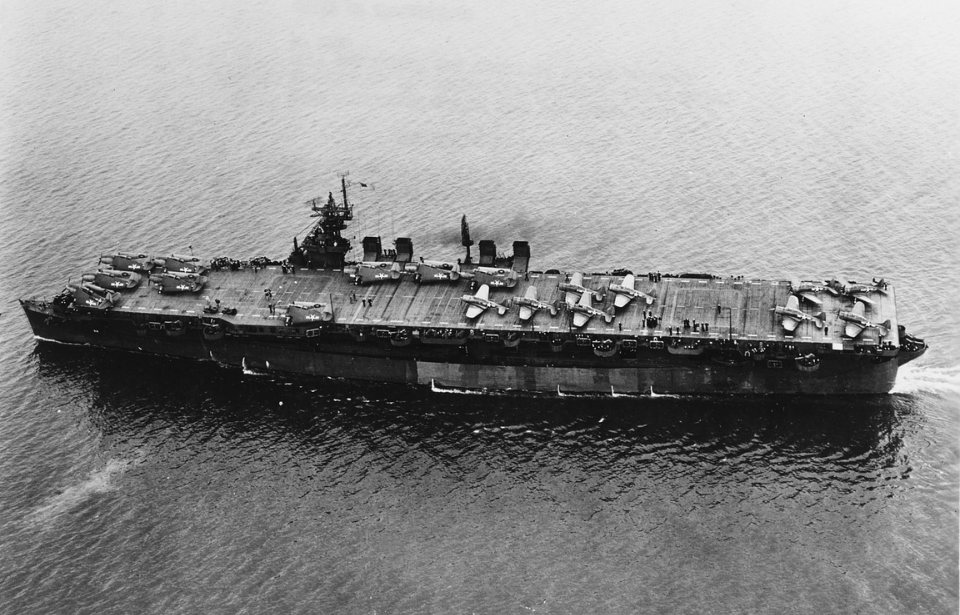A number of vessels took part in the fighting that occurred in the Pacific Theater during the Second World War. Among the most unique was the USS Independence (CVL-22), a light carrier built upon the hull of a light cruiser. Participating in a number of big engagements during the conflict, Independence later served as a target ship for Operation Crossroads, and ultimately met her end off the coast of San Francisco in January 1951.
Development of the USS Independence (CV-22)
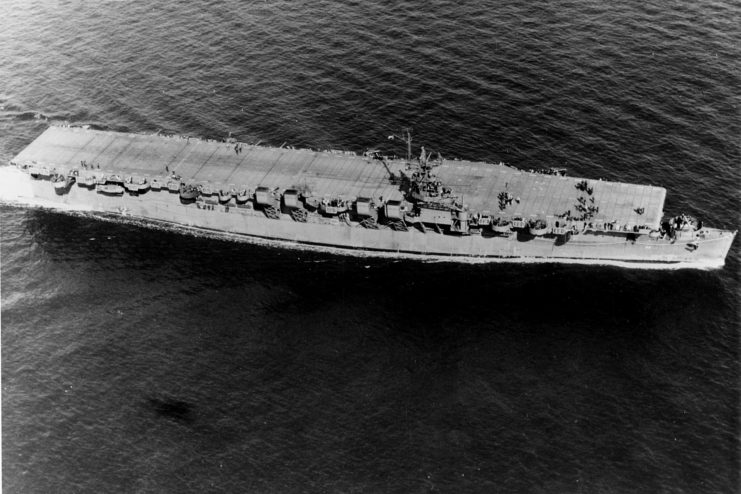
The USS Independence was laid down in May 1941, in response to the growing threat of the war raging in Europe. The lead ship in her class of light aircraft carriers, she was converted from the hull of the Cleveland-class light cruiser USS Amsterdam (CL-59). While turned into a carrier, her origins could still be seen in her sharply-pointed cruiser-esque bow.
Launched in August 1942 under the designation CV-22, Independence was commissioned under the command of Capt. George Richardson Fairlamb Jr. in January of the following year. Upon entering service, she had a displacement of 10,662 tons standard, could carry a crew of 1,569 and was armed with 26 Bofors 40 mm Automatic Gun L/60s. Powered by General Electric turbines, four shafts and four boilers, she had a range of 13,000 nautical miles and could travel at 35.4 MPH.
Her island superstructure was set along the starboard side of the hull, and her flight deck was left largely unobstructed to support the launch and recovery of her fixed-wing aircraft. Initially intended to carry 30 aircraft – 12 fighters, nine torpedo bombers and nine dive bombers – Independence typically held between 33 and 34 – 24-26 fighters and eight-nine torpedo bombers.
Becoming the US Navy’s first dedicated night carrier
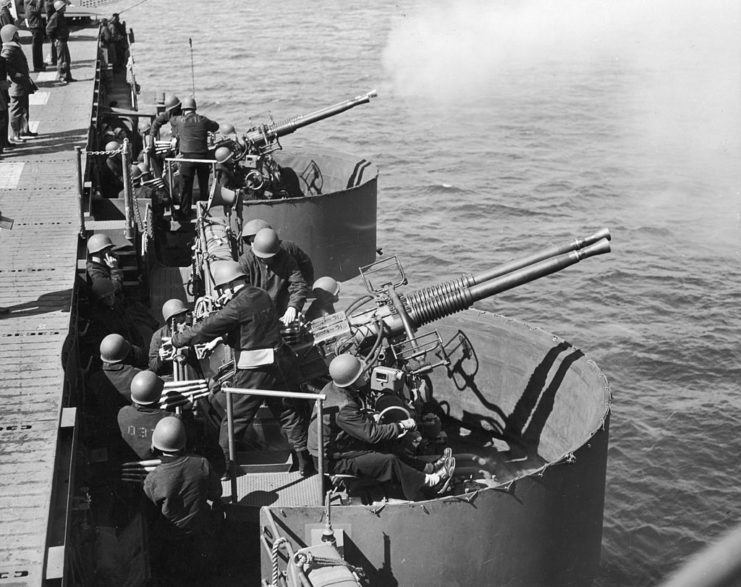
After completing shakedown training in the Caribbean, the USS Independence made her way to San Francisco to join the Pacific Fleet. Following training at Pearl Harbor with the USS Yorktown (CV-10) and Essex (CV-9), she traveled to Marcus Island to perform a raid, which destroyed over 70 percent of the Japanese installations installed there.
At this point re-designated CVL-22, Independence conducted a similar strike against Wake Island, after which she aided in the American attack on Rabaul. During the engagement, her crew secured their first victories, downing six enemy aircraft. Following this, she sailed to the Gilbert Islands to conduct pre-landing strikes on Tarawa.
During a counterstrike by the Japanese, the light carrier was attacked by a group of aircraft, suffering at least five torpedo hits. One struck her on the starboard side, causing enough damage to put her out of commission for approximately six-seven months. While undergoing repairs at Pearl Harbor, she was fitted with an additional catapult, which allowed her to begin training to become the US Navy’s first dedicated night carrier.
Undergoing exercises in the waters off Hawaii and Eniwetok, she became the home for torpedo and fighter units of Night Air Group 41 (NAG-41).
Preparing for the Battle of Leyte Gulf
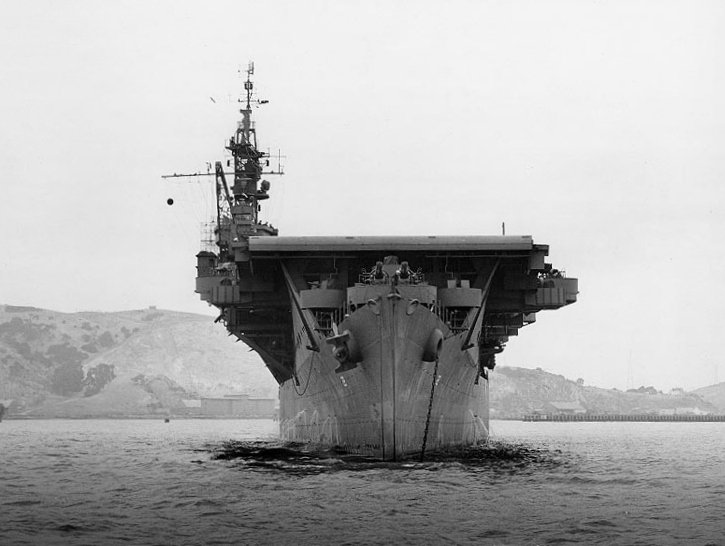
In August 1944, the USS Independence took part in the Battle of Peleliu, known for being the bloodiest battle in the history of the US Marine Corps, conducting night reconnaissance and combat air patrol. The follow month, as part of the Fast Carrier Task Force, she launched a number of strikes on the Philippines, in preparation for the Allied invasion. When the Japanese failed to launch any counterattacks, Independence returned to daytime operations.
In October, the Fast Carrier Task Force conducted strikes on Okinawa, the Philippines and Formosa, with all Japanese counterattacks from the air being repelled. It was around this time that high-ranking naval officials began to suspect something was about to occur, with Adm. Robert Carney remarking that “something on a grand scale” was underfoot.
That “something” was the Battle of Leyte Gulf, which occurred between October 23-26, 1944. During the engagement, the Imperial Japanese Navy (IJN) fleet launched a three-pronged effort to turn back the American beachhead.
The vessels making up the Fast Carrier Task Force, under the command of Rear Adm. Gerald Francis Bogan, spotted the IJN’s striking force in the Sibuyan Sea and engaged, sinking the Japanese battleship Mushashi and damaging a cruiser. The decision was then made by Adm. William Halsey to move northward in search of another Japanese carrier group, at which time the night fighters aboard Independence made contact. An attack was launched at dawn, sinking all four Japanese aircraft carriers.
The Battle of Leyte Gulf ultimately signaled the end of the IJN’s status as a major threat to US naval forces.
Final actions of the USS Independence (CVL-22) during World War II
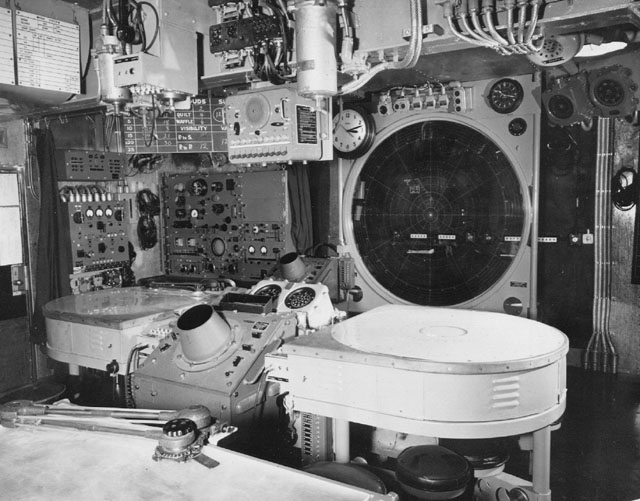
Beginning in November 1944, the USS Independence got underway off the coast of the Philippines, conducting defensive operations and night attacks. She then supported the Lingayen Gulf landings, before traveling to the South China Sea.
In March 1945, after undergoing repairs, the light carrier sailed to Okinawa, where she carried out pre-invasion strikes. When the battle began, she remained off the coast, supplying strike aircraft for the American forces. Once her job there was complete, she returned to Leyte, before traveling back to Japan to support the US occupation of the country.
To close out her World War II service, for which she received eight battle stars, Independence was tapped to join Operation Magic Carpet, the return of servicemen who’d fought in the Pacific Theater back to the United States.
Operation Crossroads
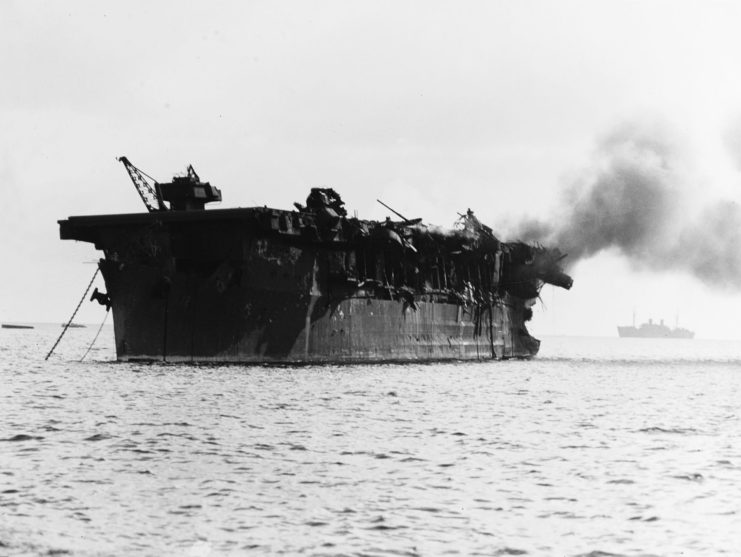
Following the Second World War, the USS Independence was chosen to be a target vessel for Operation Crossroads, the US Army’s nuclear weapons tests at Bikini Atoll. She was struck as part of Test Able, along with the USS Nevada (BB-36), Arkansas (BB-33), Salt Lake City (CA-25), Saratoga (CV-3) and many others.
On July 1, 1946, Independence was positioned within 1.5 miles of ground zero. An atomic bomb was dropped on the light carrier, and while she didn’t sink, her island and funnels suffered severe damage. After taking part in a second explosion on July 25, she was taken to Kwajalein and decommissioned.
Discovery of the wreck of the USS Independence (CVL-22)
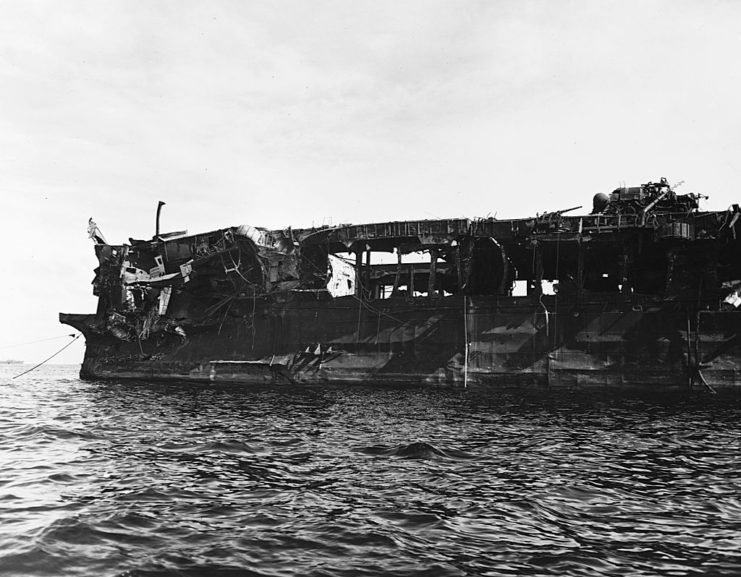
After a brief stint at Pearl Harbor, the USS Independence was brought to San Francisco to be studied. Ultimately, the US Navy made the decision to scuttle the light carrier, as she was too old and far too vulnerable to potential espionage to see further use. When the time came, she was struck by two torpedoes near the Farallon Islands, sinking below the water on January 29, 1951.
Prior to being scuttled, Independence was filled with radioactive waste from the University of California Radiation Laboratory and other vessels that participated in Operation Crossroads. This led to some controversy, as wildlife and environmental activists worried about the impact of such materials on the ecosystem around the Farallon Islands.
In 2009, a deep-water survey by the crew of the NOAAS Okeanos Explorer found the wreck of Independence 2,600 feet below the water of the Monterey Bay National Marine Sanctuary. Six years later, a team from the US National Oceanic and Atmospheric Administration (NOAA) explored the sunken ship with the autonomous underwater vehicle (UAV) Echo Ranger, which found the vessel to be mostly intact. There were also no signs of radioactive contamination.
More from us: These Are the Largest US Warships Ever Built
A year later, in 2016, a mission conducted in conjunction with NOAA and the Ocean Exploration Trust led to footage of at least one intact Grumman FGF Hellcat and the partial remains of a Curtiss SB2C-4 Helldiver within the wreck of Independence. There were also remnants of the light carrier’s anti-aircraft weaponry.
